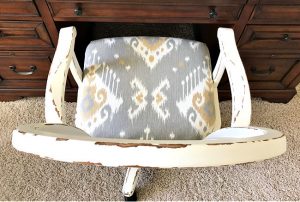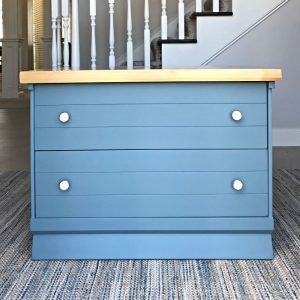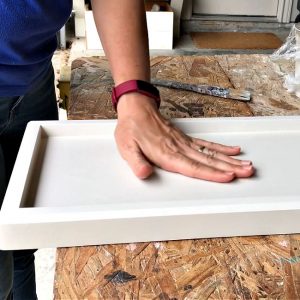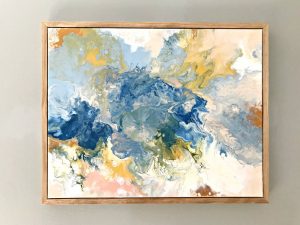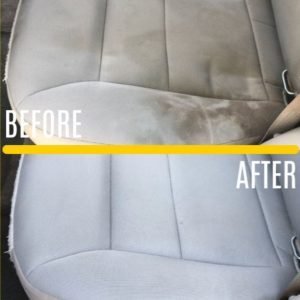DIY Tips for Painting Furniture
But, you’ll find different answers to some of these questions and different steps for how to paint furniture ALL OVER THE INTERNET. It doesn’t mean that either way is bad or wrong.
That person just has a different way to do things, that works for them.
It’s always best to try new products and steps for furniture makeovers, then decide which ones you like, you find easiest to do, and will use again.
These DIY Tips for Painting Furniture are my answers to how I would paint furniture. Hopefully, my opinion and experience will help you decide what to do on your next, or first, furniture makeover!
Table of contents
- What Kind of Paint Do You Use on Furniture
- Why Do People Use Chalk Paint on Furniture
- Can You Paint Furniture Without Sanding First
- Can You Use Regular Wall Paint on Furniture
- Can You Paint Over Old Paint on Furniture
- Can You Paint Over Old Stain on Furniture
- How Do You Paint Bare or Unfinished Wood
- What Paint to Use for Solid Color Painted Furniture with a Sheen
- What Paint to Use for Distressed of Layered Paint Looks on Furniture
- What Paint to Use for Faux Metal Finishes
- How to Get Rid of Dust Nibs in a Top Coat
- Do You Have to Use Wax Over Chalk Paint
- 20+ Beginner Furniture Painting Tutorials
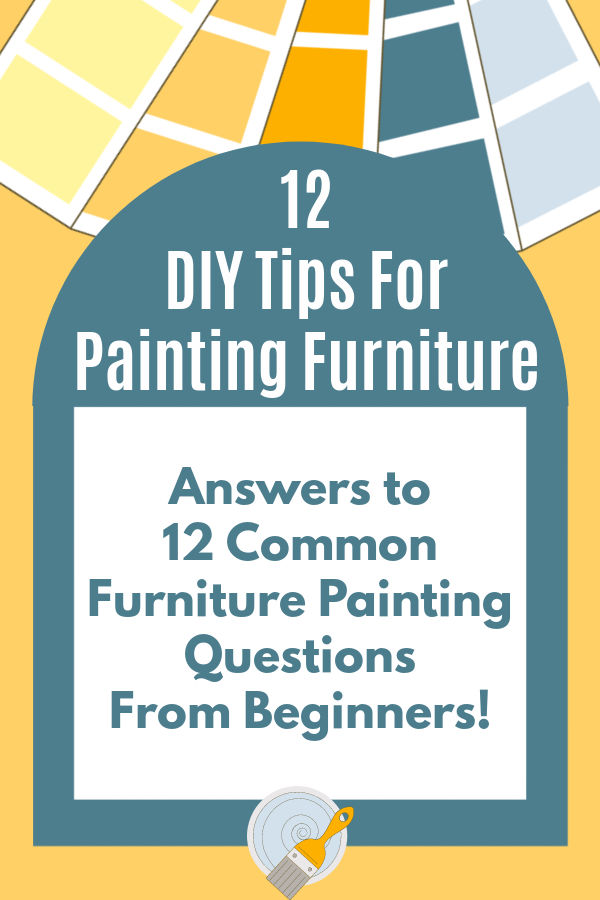
Before we get started, I have all of the basic steps for how to paint furniture for beginners in another post. And, be sure to check out this post for 20+ Step by Step Furniture Painting Tutorials, if you need furniture makeover inspiration.
What Kind of Paint Do You Use on Furniture
Like I said in the How to Paint Furniture for beginners post, I recommend using paints on furniture that are easy to use, low VOC (or fumes), water-based, fast drying, and durable.
You can find a more detailed explanation for what I think are the pros and cons of Latex Paint, Acrylic Paint, Oil-Based Paint, Chalk Paint, and Chalk-like Paint in that post.
But, the quick answer here is that I usually use chalk paint or chalk-like paint on furniture because it dries fast, cures (or hardens) fast, is easy to sand and distress, has very low VOC’s and odor, and is durable.
I also like acrylic wall paints like Magnolia Homes by Kilz line of interior paints and Chalk Style Latex Paints, like Rust-Oleum’s Chalked line of paints on furniture.
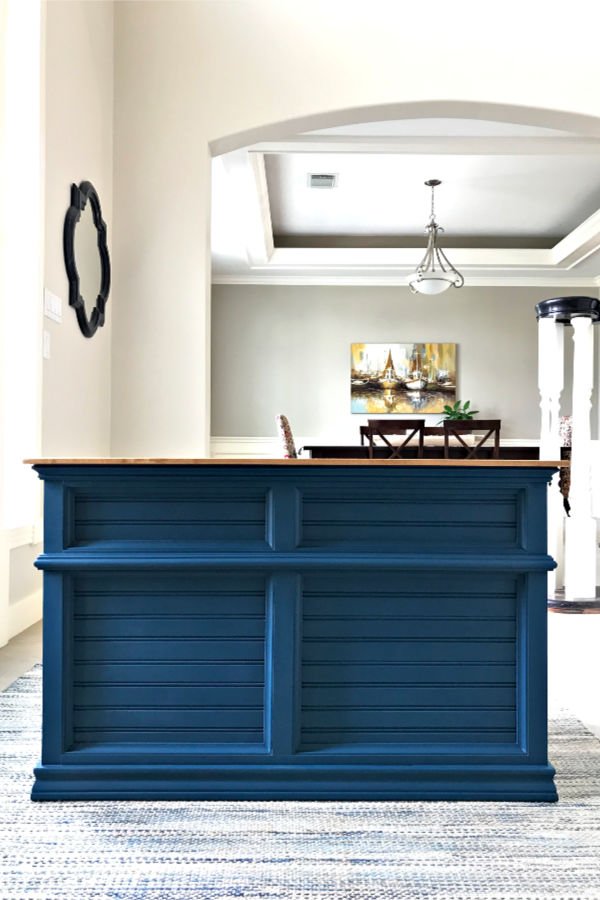
Which Paints I Use on Furniture
Here’s some of my favorite paints to use on furniture. All of these fit my requirements for safe, easy to use, easy to clean up, fast drying, durable paints. And, all of these are great for beginners that want to learn how to paint furniture.
- Rust-Oleum’s Chalked Paint
- Country Chic Chalk Style Paint
- Retique It Chalk Style Paint
- Magnolia Homes by Kilz acrylic interior paint or chalk style paint
- My DIY Chalk Paint Recipe with Plaster of Paris and Latex or Acrylic Paint
Grab the 19 page free printable version of my Beginner’s Guide to Painting Furniture that includes everything from this post, plus answers to 12 Common Questions about Painting Furniture.
Why Do People Use Chalk Paint on Furniture
I like to use chalk paint on furniture because it dries fast and cures hard. That harder finish is more durable and is ready to put things on within a day or two. Drying fast means I can apply a 2nd coat faster.
And a huge benefit with chalk paint is that it doesn’t require a primer. Chalk paint sticks to most finishes without a primer and without prior sanding and stripping of the old finish.
Some chalk paints don’t even require a top coat. Though I generally like a matte or flat top coat on furniture, just for extra durability and a nice sheen.
Chalk paint also provides rich, even color with generally just 2 coats. So, in my experience, chalk paint has less steps and saves time.
You just have to know how to use it properly. I think chalk paint became so trendy 15 years ago because of how easy it makes painting furniture, even for beginners.
Every once in a while I get a comment on YouTube about how chalk paint looks hard to use. I honestly couldn’t disagree more. It’s my go-to furniture paint and one of my favorite DIY Tips for Painting Furniture because it is so easy to use.
I think sometimes it can seem hard because there are just so many ways to use chalk paint, so many furniture style options and techniques, that it can be confusing to newbies.
Check out this post about How to Make Chalk Paint with Plaster of Paris for a printable guide and recipe.
Can You Paint Furniture Without Sanding First
Technically, yes. If you are using chalk paint or chalk-like paint it will stick to most surfaces without sanding or a primer. Just be sure to clean the furniture with a degreaser like TSP first.
You may need to sand any rough spots smooth first. Paint won’t level out uneven or rough spots in an old finish.
So, you will need to sand and/or patch rough spots to make sure the finish is damage-free and smooth before painting.
Some non-wood or laminate furniture with slick, non-porous finishes should have a light sanding before painting too. It never hurts to do a light sanding if that means the paint will last longer. 🙂
Can You Use Regular Wall Paint on Furniture
Yes, I use wall paint on furniture all the time. But for most wall paint, I mix it into my own homemade chalk paint. It’s a simple recipe and quick to do.
I like mixing it into chalk paint because it makes the wall paint dry faster and cure harder and faster than it normally does. And, it’s easier to sand because it loses some of the plasticity that wall paint has.
Homemade chalk paint works exactly like the store bought brands. But, it’s usually cheaper to buy wall paint. And, wall paint is available in hundreds of colors. So, it’s easy to get the exact color you want when you make your own with wall paint.
There is one wall paint that I’ve used a lot on furniture without mixing it into chalk paint. It is the Magnolia Homes by Kilz Interior Paint.
It is an acrylic based wall paint that I think acts a lot like chalk paint, in that it dries fast and cures fast.
If you decide to use wall paint on furniture, I recommend using an eggshell or satin sheen. They look great and the sheen is easy to clean when the finish gets dirty.
Higher sheens highlight dents, dings, and brushstrokes. Higher sheens are also not as nice when mixed into chalk paint.
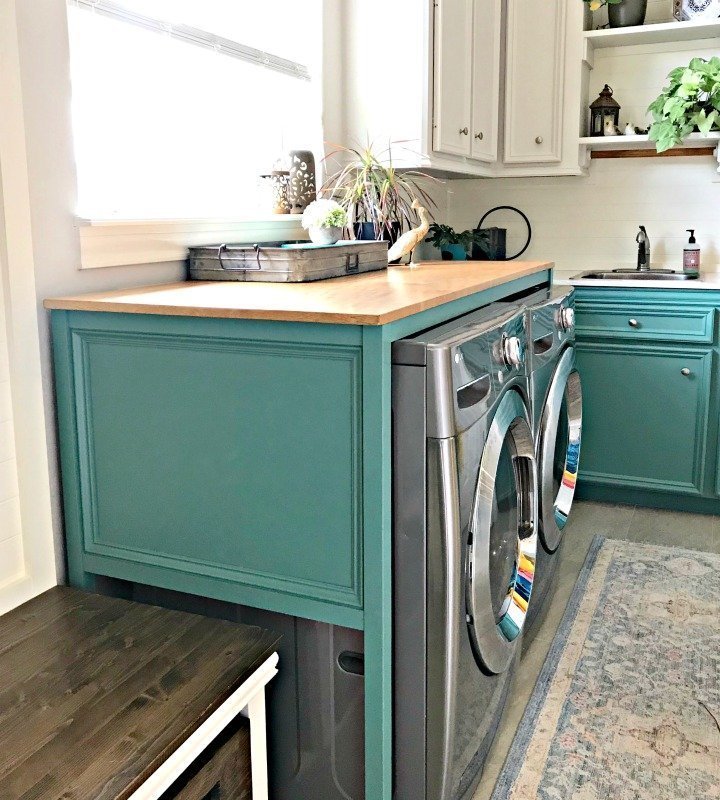
Can You Paint Over Old Paint on Furniture
Yes, you can paint over old paint on furniture. It’s the easiest way to give furniture a new look. But, if the old finish isn’t smooth or in perfect condition, you should sand the old paint finish smooth and patch dents and damage before applying new paint.
Wear a mask whenever you sand old finishes. When the old finish is smooth, dusted off, and ready for new paint, you can apply a great water-based primer before applying the new paint.
Or, if the new paint is chalk paint or chalk-like paint, you can skip the primer on lightly sanded old paint. Chalk paint is great at sticking to most surfaces. See the full details for painting over an old finish in the How to Paint Furniture for Beginners post after you finish reading this DIY Tips for Painting Furniture post.
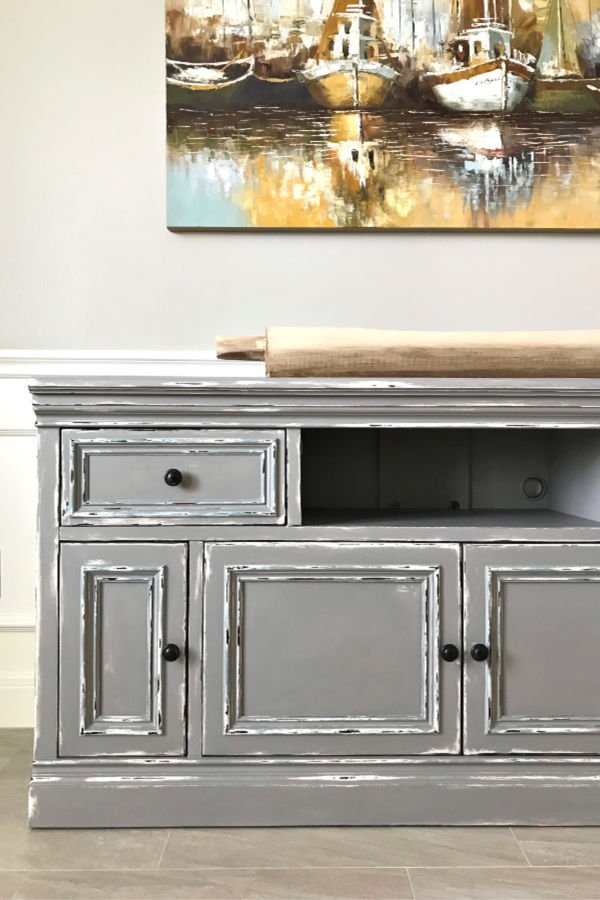
Can You Paint Over Old Stain on Furniture
Yes, again. You can paint over old stain finishes on furniture. You should lightly sand the old finish to scuff the surface. That will get it ready for a strong bond with the new paint. You should also repair any damage before painting.
Then clean off the sanding dust, prime the old finish, then paint with the new furniture paint. Wear a mask whenever sanding.
How Do You Paint Bare or Unfinished Wood
If you build your own furniture, like me, or have stripped furniture that is ready for a new paint look, here’s how to paint unfinished or bare wood. This might sound strange, but for bare or stripped wood that doesn’t have a finish, I use Danish Oil as a primer.
Technically, it’s a type of stain that I often used alone, to stain wood. But, it makes a great primer too. That’s because Danish Oil soaks into wood and hardens in the wood to make it more durable. Soaking into the wood means that it is also sealing the wood making a nice smooth starting point for paint.
But don’t worry, it’s not too smooth. Paint sticks well to Danish Oil. Watco, the company that makes Danish Oil even recommends Danish Oil as a primer under paint. I used Watco under the paint on my Easy DIY Wood Drawer Fronts just last month.
Wiping on Danish Oil is so much faster than applying primer. But, you can always use a primer instead. I recommend using a Water-Based Primer under paint on furniture.
Just be sure to sand the bare or unfinished wood to 180-grit to prep the wood for the Danish Oil. And, don’t forget to remove all the dust before applying the Danish Oil or Water-Based Primer.
What Paint to Use for Solid Color Painted Furniture with a Sheen
Here is the easiest way to get a solid color with a pretty, professional looking sheen on furniture. Start with a smooth, ready to paint piece of furniture again. Sand and repair damage, as needed. Then remove all dust with a tack cloth.
Then, if you’re using Magnolia Homes by Kilz interior paint or another latex or acrylic wall paint, apply a water-based primer first. Let it dry per the directions on the product. Then apply 2 to 3 layers of a latex or acrylic wall paint with an eggshell or satin sheen. Be sure to let it fully dry between coats. That’s it!
If you’re using chalk paint, chalk-like paint, or a wall paint that was turned into homemade chalk paint, then you can skip the primer on pre-sanded old finishes. Just apply 2 to 3 coats of chalk paint to get a beautiful, even color across the furniture. Follow that with 2 coats of a good water-based top coat with the sheen that you like.
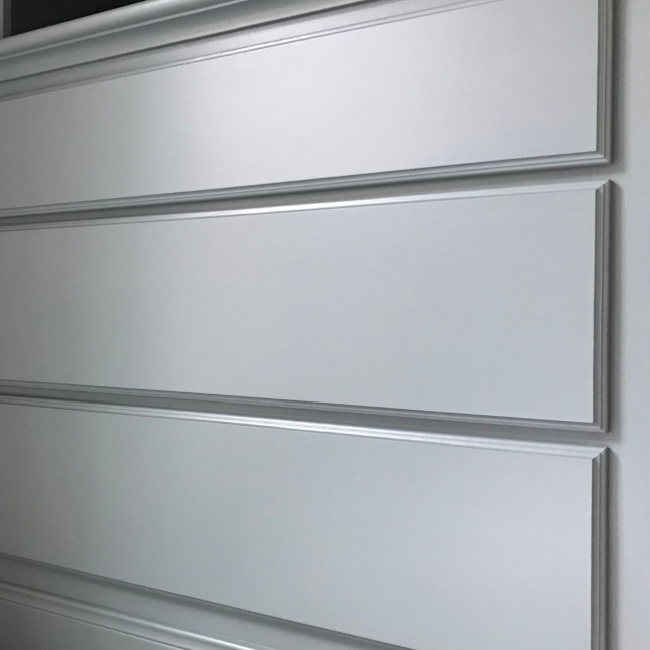
What Paint to Use for Distressed of Layered Paint Looks on Furniture
To get a beautiful distressed paint look with layers of paints and stains, sanding is key. Nothing I have used sands as well as chalk paint and chalk-like paint.
So, I always use Danish Oil as a base stain, if needed. Followed by highlights of one or two chalk paint colors on the spots I want to distress. Then 2 layers of the main chalk paint color across the entire piece of furniture.
I sometimes use chalk paint with Vaseline to easily distress furniture. You can put Vaseline on the stain or lower paint layers exactly where you want the top coat to be removed. It makes distressing easier. Here’s my steps for how to use Vaseline to distress furniture.
This DIY Gray Distressed Chalk Paint look is a great example of how I layered and distressed paint on a buffet.
What Paint to Use for Faux Metal Finishes
You don’t need to faux paint metal looks anymore. I mean you can, if you want. But that’s the old hard way to get a pretty metal finish on furniture, decor, and cabinets. Now, you can buy chalk-like paints that have flecks of the actual metal in the paint.
So, copper, brass, and iron chalk-like paints look beautiful and contain bits of those metals. You can apply the paint just like other chalk paints. And, it looks like pretty, shiny metal.
And, you can leave it like that or spray it with a green or blue oxidizing spray that reacts with the metal in the paint just like real metal oxidizes. Here’s how I created 20 different faux metal patina paint finish looks using copper, brass, and iron (rust) paints.
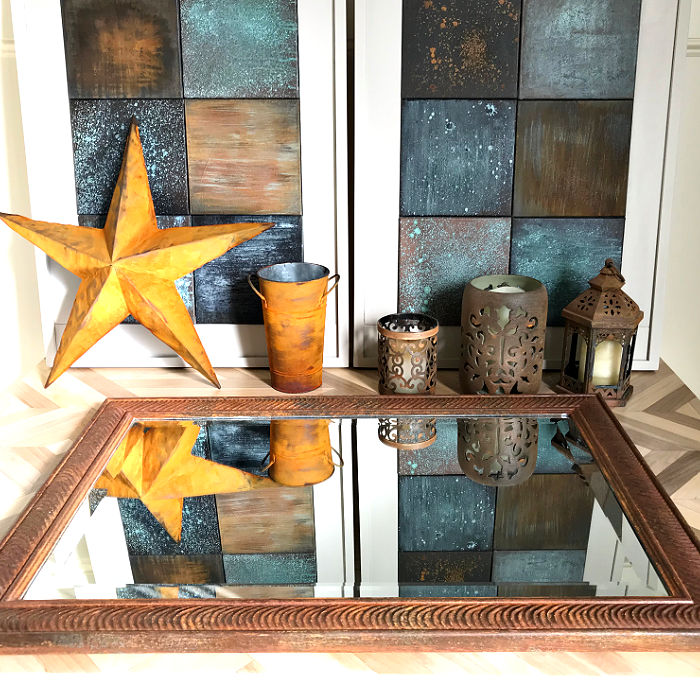
How to Get Rid of Dust Nibs in a Top Coat
If you have a few dust nibs, or tiny bumps, in the last fully dry layer of top coat, grab a brown paper bag for an easy fix. Lightly sand the top coat with the brown paper bag in a circular motion. This will usually remove nibs without scuffing the look of the top coat.
A brown paper bag has the same grit as something like 3000 grit sandpaper, depending on the bag. A brown paper bag can sometimes even out uneven sheen on top coat that can be caused by brushing over partially dry top coat too. But that only works in mild amounts of uneven sheen.
Do You Have to Use Wax Over Chalk Paint
Not at all. You can, if you want to. When Chalk Paint became popular, 10 or 15 years ago, everyone was putting chalk paint on it. When I learned about chalk paint the companies selling it recommended using wax as the top coat to bring out the color of the chalk paint and to add a nice sheen to the paint.
So, I assumed you had to use wax as the top coat. I think most other people did too. But, now we know you can use normal water-based polyurethane or water-based polycrylic over it too.
I prefer a poly over chalk paint. Poly still makes the color of the chalk paint pop and adds a nice sheen. Poly is also more durable than wax. So, it helps to protect the finish a bit more. Poly is also easier to wipe down and clean off than wax.
So, I only use wax over chalk paint if I am using a dark wax to add that darker detail to the paint color. You can see how I did that in this Blue DIY Chalk Paint Bathroom Vanity. You could also get a similar antiqued look to wax by using a glaze, like General Finishes Van Dyke Brown.
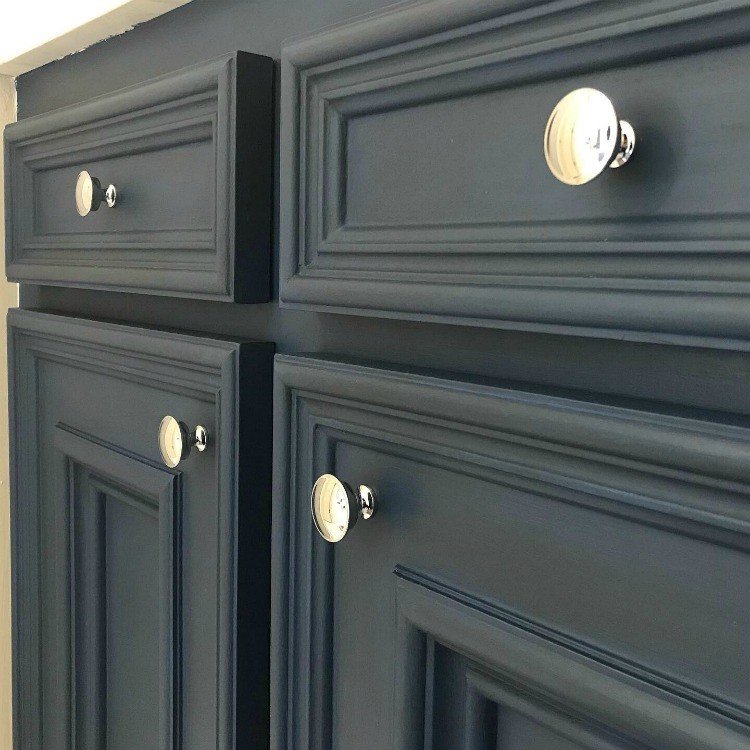
20+ Beginner Furniture Painting Tutorials
Check out this Video for Beginner Level Furniture Painting Ideas. You can find tutorials for everything in this video in this Step by Step Furniture Painting Tutorials post.
That’s it, guys. Thanks for checking out this post full of DIY Tips for Painting Furniture. Looking for more of my Furniture Painting Videos? Check out this Beginner Furniture Painting playlist on YouTube.
Grab the 19 page free printable version of my Beginner’s Guide to Painting Furniture that includes everything from this post, plus answers to 12 Common Questions about Painting Furniture.
Here’s how to do this Shabby Chic Style DIY White Distressed Chalk Paint Look.
I also love this Easy DIY Furniture Redo with Smoky Blue Paint.
Here’s How to Get a Super Smooth Finish with Chalk Paint. It’s a-mazingly easy!
Make your own beautiful wall art with this DIY Acrylic Paint Pouring Wall Art Tutorial.
Here’s How to Clean Car Seats At Home, the easy way.
If you’re into woodworking, try this beautiful DIY Geometric Wood Table Top.
Feeling inspired? Now that you’ve read these DIY Tips for Painting Furniture, you can do it too. Let me know if you have questions. Don’t forget to sign up for the Abbotts At Home email newsletter to get DIY, Remodeling, and Crafty ideas in your inbox.
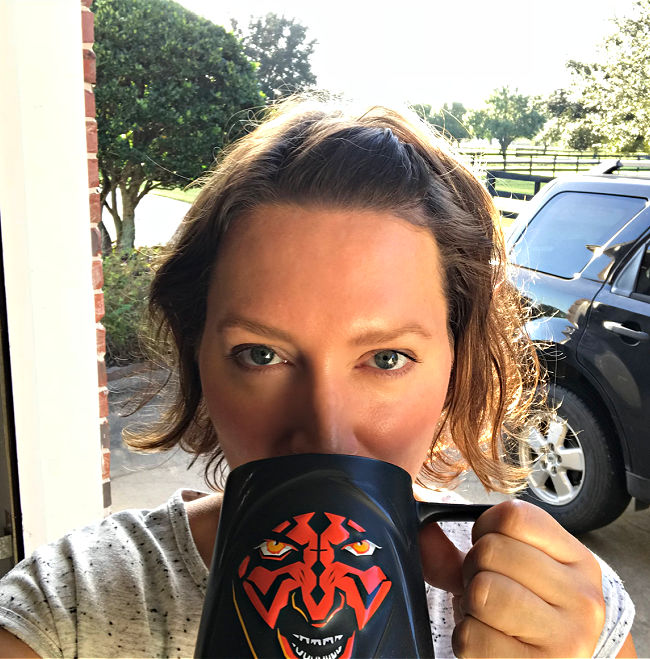
Stephanie Abbott has been remodeling homes, updating & building furniture, and working on DIY home maintenance and cleaning tips for over 20 years. Her remodeling has been featured in Better Homes and Gardens Magazine. And, her DIY YouTube channel has had more than 8 million views.
Most of the DIY tutorials and videos on this site focus on beginner to intermediate level DIY Projects that can be done in an affordable way without high-end, expensive tools. All of the cleaning tips on this website have been tested in her home.


